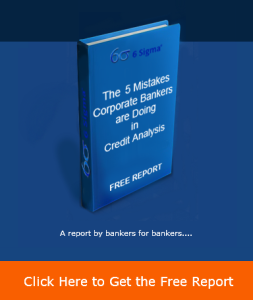Many a banker thinks that being certified as Standardized mode, he or she is allowed to continue to practice banking the same way as has always been done. What bankers fail to realize is that one of the more important tenants of the Basel accords is for them to become proactive in their management of credit risk, and not reactive to credit problems. Being Standardized or IRB is a technical distinction. The ability of a banker to become proactive is a must across all disciplines in banking, particularly credit risk.
 OK so what do we mean by Proactive?
In our article on “How we make Credit Decisions” we discussed some possible reasons of why bankers keep repeating the same mistakes (https://www.credit-risk-store.com/make-credit-risk-decisions/). Essentially the majority of bankers are reactive to credit issues, they wait until the problem arises then they take measures to sort it out. By producing credit applications of 25 pages, they are led to believe that the study is comprehensive enough and early warning signs are covered in full. In fact in one conversation with a banker, I was told that he was in full control given the annual credit review, frequent calls to the client, and acquisition of excess reports and MIS. We touched on this subject in our article “How do you manage Credit Risk at your bank?” in which bankers fall into the trap of thinking they have the magic solution to affective credit risk management (https://www.credit-risk-store.com/how-manage-credit-risk-bank/).
OK so what do we mean by Proactive?
In our article on “How we make Credit Decisions” we discussed some possible reasons of why bankers keep repeating the same mistakes (https://www.credit-risk-store.com/make-credit-risk-decisions/). Essentially the majority of bankers are reactive to credit issues, they wait until the problem arises then they take measures to sort it out. By producing credit applications of 25 pages, they are led to believe that the study is comprehensive enough and early warning signs are covered in full. In fact in one conversation with a banker, I was told that he was in full control given the annual credit review, frequent calls to the client, and acquisition of excess reports and MIS. We touched on this subject in our article “How do you manage Credit Risk at your bank?” in which bankers fall into the trap of thinking they have the magic solution to affective credit risk management (https://www.credit-risk-store.com/how-manage-credit-risk-bank/).
In short, being proactive means the following:
- Identify credit issues with the obligor early, long before they surface in a material sense;
- Align your exposure to the obligor accordingly, reducing it with increasing credit risk;
- Keep an eye on these issues during the monitoring phase of the account; and
- Take action when they start to deteriorate.
Linking exposures to risk profile of the obligor will preserve the Portfolio Risk Rating (PRR). Your bank’s share of wallet of the obligor’s needs should reduce with increasing credit risk, so that come the day the obligor has problems fulfilling its obligations to banks, your exposure is either too small or you are out of the relationship altogether.
In order to achieve the above, you need to measure risk. Risk in our definition is any factor that may have an adverse impact on the obligor that limits it from generating sufficient cash to meet its commitments to banks. Central to this definition, cash flow assessment and calculation is essential. In addition, the obligor’s business model needs to be assessed for weaknesses in cash flow generation; those that have impacted negatively on its ability to meet obligations to banks, and those that are likely to do so through sensitivity analysis. Check our Financial Analysis packages for details https://www.credit-risk-store.com/online-courses/financial-analysis/. In addition, one has to measure obligor needs and then apply the share of wallet on these needs. These needs are both short and long term. On the latter in particular, central to structuring facilities is the assessment of the obligor’s future cash generating ability, the tenor of the exposure relative to the underlying credit risk, and the cushion needed to cover volatility in cash flows. For more details please refer to our Facility Structuring package https://www.credit-risk-store.com/online-courses/financial-analysis/. Enjoy going through these articles. If you feel you need to know more about how to analyze, visit our Credit Risk Store on https://www.credit-risk-store.com/online-courses/© 2014 6 Sigma Group
While the information contained herein is believed to be accurate, neither 6 Sigma nor any of its affiliates or subsidiaries or its employees makes any representation or warranty, express or implied, as to the accuracy or completeness of the information set out in this document or that it will remain unchanged after the date of issue of this document, and accordingly neither 6 Sigma nor any of their respective affiliates or subsidiaries or employees has any responsibility for such information. This document is not intended by 6 Sigma to provide the sole basis of any credit decision or other evaluation and should not be considered as a recommendation by 6 Sigma that any recipient of this document should purchase an equity stake in, provide credit facilities to, or conduct any business with any company(ies) listed in this document. Each recipient should determine its interest in the information provided herein upon such independent investigations as it deems necessary and appropriate for such purpose without reliance upon 6 Sigma.
WANT TO USE THIS ARTICLE IN YOUR NEWSLETTER OR WEB SITE? You can, as long as you include this complete phrase with it:
“6 Sigma Group teaches bankers around the world how to become better bankers. Get the “5 Mistakes Bankers Do in Credit Analysis” at www.credit-risk-store.com”